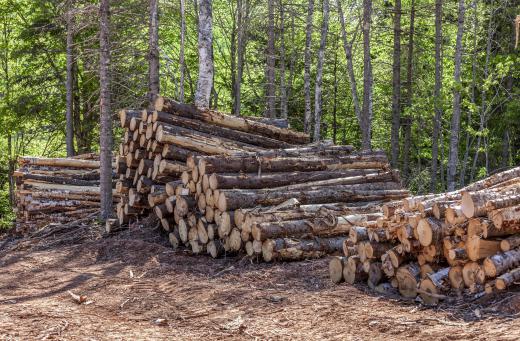Also known as a cutting chain, a saw chain is a component that is necessary for the successful operation of a chainsaw. The component is typically a series of steel links that are connected with the use of rivets. Steel teeth are structured into the design just outside the loop of the chain, helping to aid in the cutting action while also helping the chain to remain securely in position on the chainsaw.
Considered one of the more powerful types of saws, chainsaws are most commonly used for cutting wood. Smaller versions are available for home use, and are ideal for trimming limbs from trees or even sawing through the trunks of larger bushes. Larger chainsaws are used in professional logging and other forms of wood harvesting. Both the smaller home models and the larger industrial models make use of a saw chain mechanism in order to provide clean and concise cuts.

The typical saw chain is designed for high-speed rotation that makes it possible to provide a precise cut. The basic operation involves mounting the chain onto what is known as the guide bar. Once securely in place, the device is started and the saw chain begins to revolve around the guide. The high speed coupled with the sharp teeth of the chain make it possible to incrementally cut into a wood surface without using a great deal of pressure.

Over the years, different types of saw chain configurations have been developed. One option is the scratcher chain, a design that involves a series of teeth that essentially rub or scratch on a wood surface, gradually cutting into that surface. Another design, known as the chipper chain, includes features that help to regulate the depth of the cut, an enhancement that helps to minimize the number of teeth required to manage the task and allow additional room for sawdust and chips to safely be projected away from the cutting area. With most designs today, fail-safe components are installed to help minimize the potential for injury to the operator and anyone who is within range of the saw.
Maintenance of the saw chain is important to making sure the cutting is within reasonable standards. Periodically, a chain must be removed from the saw and sharpened after a number of uses. Depending on the design, some type of cleaning and lubrication to the teeth, rivets, and links is necessary to keep the chain in condition. Failure to do so can place additional stress on the chain, increasing the chances for a link or rivet to snap, possibly causing injury to the operator.
From simple chainsaws designed for home use to industrial-sized saws used in milling and logging operations, the choice of chain usually depends on the type of wood involved as well as the dimensions of the logs or trees involved. Professional loggers can easily determine what type of chainsaw is most appropriate for a given task, or if some other cutting tool would be the best option. Even in a residential setting, a landscaping task may require the use of more than one type of saw chain.

